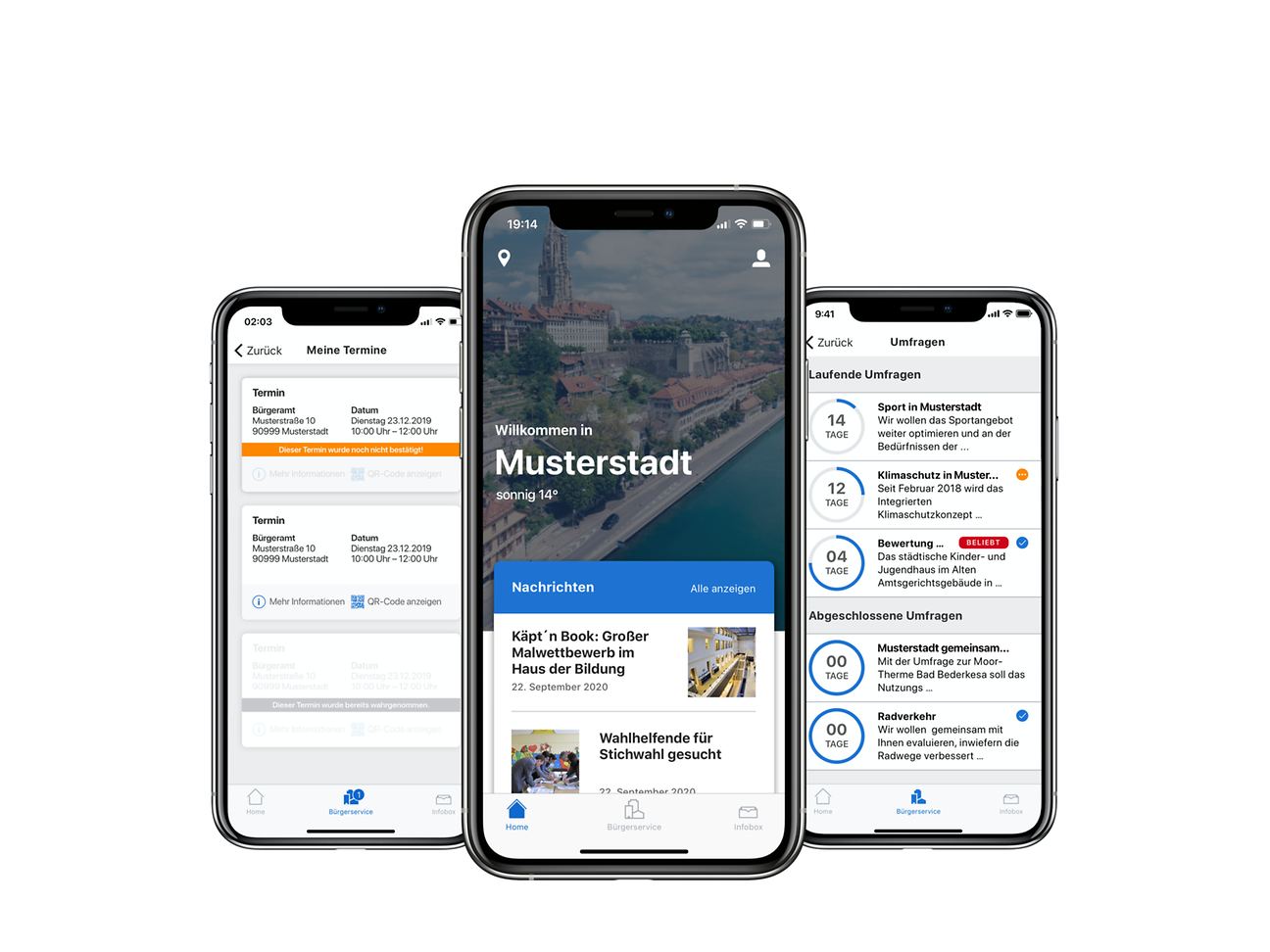

Urban mobility gets cities and regions in motion
Cities want more quality of life and less traffic, vibrant centers, strong retail and good integration with the regions. How can this be achieved? With a new idea for the interaction of traffic routes for cars, trains, bicycles, pedestrians and smart data utilization.
When cities attract people, there is a reason for it. Cities are home, provide the very basis of life in the form of work, and are vital and lively places for people to meet. They offer a pleasant living environment. They provide people with space for relaxed shopping, with markets, meeting places and culture. They give rise to impulses, they have a distinctive face. However, in all places where many people come together and move from A to B, mobility becomes a challenge. Cities suffer from congestion and traffic jams. People suffer from noise and air pollution. Well-connected, future-proof transportation services are within reach. At their core: flexible, combinable building blocks based on a high-performance infrastructure and smart data utilization. Five examples.
Perfectly connected - the rural area
Linda and her small family have moved to the country. She has her "kid-free" morning and wants to get a taste of city air while having breakfast with friends at her old favorite café. How about driving straight into the small parking garage in the middle of the city center? The traffic jam is guaranteed, a free space is not. Endlessly circling the block for a possible space doesn't make sense at all. It is wasted time and the "green conscience" doesn't play along. It's better to take the car to the train stop and, having arrived in the city, see what is on offer.
Getting from the country to the city can be completely easy. In recent years, the parking lot has developed into a real transportation hub and links a wide variety of means of transportation: local trains, your own car with parking spaces, charging stations for electric cars, rental cars, cabs, but also rental bikes or motorized scooters. Depending on the current traffic situation, Linda is shown suitable connections on displays and in her mobility app. She will continue her journey to the café without having to wait long - by bus or electric scooter, depending on her mood.
Sounds like magic? No, just clever use of data. Namely, about how people usually use which means of transport. Of course, park-and-ride lots are connected, providing operators and city planners with real-time data on how busy the lot is. Combined with commuter analysis and mobility data, traffic managers can control traffic. For example, they can recommend buses and trains. Of course, with full transparency on the CO2 consumption incurred. In addition, cities can plan for the future: Is a station for rental bikes worthwhile at this location?
Such integrated concepts for mobility are real competition for the car: They can be used to reduce traffic in the city, CO2 emissions, and particulate matter - without concessions to comfort.
From the end of the search for a parking space
Ben is dependent on his wheelchair. He reliably needs a parking space near his destination, for example for doctor's appointments.
Sensors in parking spaces for the disabled, induction loops or cameras show whether Ben will find a space there. Combining this real-time data with forecast data quickly and easily guides Ben to the available spaces. In larger parking lots or parking garages, camera and barrier systems also automatically detect when his car is entering and leaving. A guidance system directs Ben to the space. Technology also allows parking spaces to be booked and that space kept free.
The data helps analyze how busy the facility is in real time. In addition, this information feeds into traffic management systems. Parking lot operators, retailers, city planners, traffic associations and neighboring communities all benefit from intelligent parking control: If Ben and other visitors can navigate directly to their parking space, this reduces traffic and pollutants in the air.
Convenience in finding parking spaces is a real asset for cities: it facilitates links with the region and supports retailers. Thanks to the data, transport companies can better tailor their services and schedules to the needs of their customers - and thus increase their appeal.
Places to meet with vibrant shops
Siggi runs a children's bookstore with selected gift items. His business can only survive with customers around. Therefore, he attracts customers with reading afternoons for children.
Siggi relies on the city's new app: his store is marked on a map with information about his offerings and events. The app shows the fastest route and points out free parking spaces.
A wide variety of data sources are linked together in the background. The information on the current traffic situation is fed via anonymized data from mobile networks, data from sensors in parking lots, induction loops or cameras, and even sensors in networked cars. They provide recommendations for the best route and parking forecasts. They can be called up in the city's app, on digital screens on the street or in the parking and traffic guidance system.
A highlight in the calendar was the Car Free Sunday featuring the neighborhood market. Siggi was able to attract new customers. With less car traffic in the city, one of the double lanes could be permanently taken back for stores, gastronomy and culture. That would make the area around Siggi's bookstore much more attractive.
Whether during the week or on a promotion day, whether for visitors from the other end of town or from the surroundings: downtown provides incentives to shop locally instead of online. Because Siggi's customers, big and small, can find his shop and its inspirations easily and without stress - and help keep the city alive.
Make way for deliveries
Every day, Lars has to deliver bread to the center of the small town from the bakery in the industrial park. Delivery traffic continues to increase. Online retailing is one of the factors contributing to this. Usually, in the very moment when he arrives, Lars notices that the loading zones are occupied. Often there is nothing left to do but park in the second row, block the sidewalk or bike path, or even the entire traffic. Some colleagues simply park in the pedestrian zone in front of the store and drive people into flight.
This could be better. With a digital solution: an app and "inventoried" delivery zones equipped with sensors. Lars can log into the delivery and loading zone. This allows city inspectors to better monitor whether the spaces are really being used by authorized vehicles. As a result, there are fewer illegal parkers in the loading zone.
Meanwhile Lars prefers not to take his car into the city center to make deliveries. He now uses the new distribution center. From here, cargo bicycles go the last mile into the city center. They have significantly reduced the burden of traffic. Even for the small town, the distribution center has been financially worthwhile. It could be implemented without a subsidy.
The administration often has little data on commercial traffic in the city, either quantitatively or qualitatively. These figures, together with information on resident parking, help planners to develop holistic access concepts, whether as a guidance system depending on the authorization of the vehicle or even as a toll.
Less traffic in the city center makes the city safer and attractive. Lars saves time (and his company personnel costs) by targeting a free space. All traffic can flow better and fewer pollutants are released into the environment.
Creating a path for tomorrow's mobility
The main axis into the city from the south has to be closed for a construction site. Traffic planner Doro is thinking about alternative routes. Can one of the existing park-and-ride lots be upgraded to a "mobility station" and take commuters further by different modes of transportation? Will a motorized scooter station help for the last two miles to the office? Are there relevant momentary rush hours, like traffic to the soccer stadium?
Doro used to have to fight her way through thick files. Now, a digital inventory provides her with secure data for a concept: In the digital twin, which is a realistic simulation of the infrastructure for traffic, all roads, rails, parking spaces, bike lanes, loading zones and even traffic signs and parking ticket machines are documented. Cameras in vehicles record the environment for this purpose. Artificial intelligence evaluates the image files. Doro can transfer the data to the geoinformation system and even display it as a digital city model in a dashboard in the cloud. It can be updated with no effort at the click of a button. Together with historical data, utilization analysis and commuter data, Doro can make reliable suggestions for the upcoming construction site and innovative concepts for new mobility offers.
This is how Doro can help shape the city of the future. Citizens get to their destinations flexibly and quickly. Car traffic decreases - to the benefit of the city as a liveable space.






